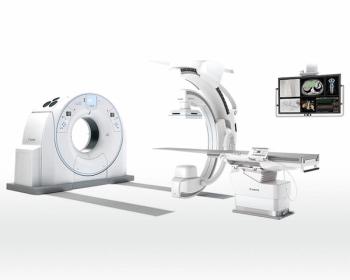
Virtual colonoscopy wins recognition as most cost-effective screening tool
Physicians’ pursuit of the subtlest signs of cancer may be misplaced when it comes to colon cancer. Finding lesions 5 mm or smaller does not significantly reduce the incidence of colorectal cancer, according to study results scheduled for the June 1 issue of Cancer, a peer-reviewed journal of the American Cancer Society. The results, published online April 23, are good news for virtual colonoscopy.
Physicians' pursuit of the subtlest signs of cancer may be misplaced when it comes to colon cancer. Finding lesions 5 mm or smaller does not significantly reduce the incidence of colorectal cancer, according to study results scheduled for the June 1 issue of Cancer, a peer-reviewed journal of the American Cancer Society. The results, published online April 23, are good news for virtual colonoscopy.
The low malignancy rate of diminutive polyps that might escape detection by virtual colonoscopy gives this CT-based technique the best estimated value per life-year gained, according to author Dr. Perry Pickhardt, an associate professor in abdominal imaging from the University of Wisconsin in Madison. It already has a relatively lower risk of complications.
Each of the major CT vendors and several independent software developers offer virtual colonoscopy packages. GE Healthcare has gone even further, working with outpatient provider AmSurg to explore how virtual colonoscopy might evolve into an accepted screening tool
With international collaborators, Pickhardt conducted a cost-benefit analysis comparing CT colonoscopy - with and without a 6-mm polyp size threshold - with the two primary screening tools for colorectal cancer: optical colonoscopy (OC) and flexible sigmoidscopy (FS). Patient discomfort and the potential for complications, ranging from abdominal pain to life-threatening bowel perforation and bleeding, keep OC and FS from being used as much as they should be. Screening is the key to reducing mortality from colorectal cancer, which is the third leading cause of cancer death in both men and women.
Virtual colonoscopy, which reconstructs the colon in 2D and 3D from CT data, offers a potentially effective alternative with fewer adverse effects and less discomfort. The medical community has been slow to embrace the technology, however, as past cost-benefit studies have sided with conventional methods.
Virtual colonoscopy came out on top with Pickhardt and colleagues because the researchers upped the detection threshold, leveling the playing field. In their model of 100,000 persons over 50 years old, they found that virtual colonoscopy with optically based follow-up of polyps greater than 5 mm was the most cost-effective screening test.
According to cost per life-year gained calculations, CTC with a 6-mm threshold for follow-up cost only $4361, while OC cost $9180 per life-year gained. CTC with no polyp size threshold cost $7138, and FS cost $7407 per life-year gained.
The incremental costs of working up lesions smaller than 6 mm at CTC resulted in a significant cost of $118,440 per additional life-year gained and accounted for more than half of all OC procedures. Moreover, working up these small, almost always benign polyps with OC caused considerable complications. The study found almost half of all OC-related complications were attributable to workup of diminutive lesions. Targeting these lesions did not improve screening efficacy, reducing incidence by only 1.3%.
The authors concluded that virtual colonoscopy and the nonreporting of diminutive lesions was the most cost-effective and safest screening option available. The availability of this method would encourage more adults to undergo screening and would consequently increase overall compliance with screening for colorectal cancer, they said.
Newsletter
Stay at the forefront of radiology with the Diagnostic Imaging newsletter, delivering the latest news, clinical insights, and imaging advancements for today’s radiologists.

























